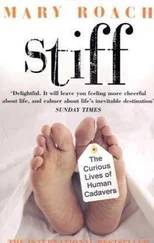The strongest cases are those in which the parents have written down the child’s statements when he or she first began talking about a past life—before they’ve met any family or friends from that life. (These are rare: Among Stevenson’s cases, only about twenty include any written record.) Without a written record, researchers must work from the parents’ memories of what the child said. This makes for wobbly evidence—not because villagers are dishonest, but because human memory is deeply fallible. It’s unreliable and easily tweaked by its owner’s beliefs and desires. Did the boy say what he said about electrocution before his parents began talking about Veerpal’s death, or did he perhaps overhear them talking about it first? Did he really say he was killed by an electrical current, or has his mom, once she learned the facts, reinterpreted something ambiguous? Perhaps the boy referred to a cord. He meant a rope, but the mother, having heard about the accident, pictures an electrical cord. That sort of thing.
Most of Ian Stevenson’s case write-ups include a chart summarizing the allegedly reborn child’s statements about a past life and about people he or she recognizes. For each of these statements and recognitions, Stevenson lists a witness, if there is one, and the comment of the witness. Typically the chart marches on for eight or ten pages, wearing down your skepticism with the grinding accumulation of names and tiny type. If you take the work of Ian Stevenson at face value, it would be hard to reach any conclusion other than this: Reincarnation happens.
The skeptics tend to dismiss Stevenson’s work a priori; few have taken him on case by case. One who tried was Leonard Angel, then a humanities professor at Douglas College in British Columbia. He chose the case of a Druze boy from Lebanon, Imad Elawar, a case Stevenson has referred to as one of his strongest. Of all the cases in which there is written documentation from the time before the suspected previous personality was located, this is the only one in which Stevenson himself wrote the statements down—thus precluding a fraudulent after-the-fact jotting. Angel complains that Stevenson nowhere sets forth these statements as they were worded by the boy or the parents. Stevenson simply writes that the parents “believed [the boy] to have been one Mahmoud Bouhamzy of Khriby who had a wife called Jamilah [Mahmoud and Jamilah were the names the boy spoke first and most often] and who had been fatally injured by a truck after a quarrel with the driver.”
Stevenson traveled with the family for their first visit to Khriby. He couldn’t find a suitable Mahmoud Bouhamzy; however, upon asking around, he found an Ibrahim Bouhamzy with a mistress named Jamilah. Ibrahim was not run over by a truck, but his relative Said was, though no quarrel was involved. Stevenson concludes that the boy’s parents had made wrong inferences based on his words—though since his write-up does not give the boy’s exact words, it’s hard to know what to think. There’s no explanation of why the name most commonly uttered by the boy would be Mahmoud. The glass slipper fit Ibrahim, and Stevenson proceeded from there.
But I was never in Khriby, and neither was Leonard Angel. Something served to convince Stevenson that the case of Imad Elawar strongly suggested reincarnation. Whether it was the facts of the case or a blind eye born of bias, I can’t say.
So I’ve come to India for answers. I want to get inside one of these cases, meet the families involved, hear the things they say, watch them interact.
In India, I’m finding, the answers do not always fit the questions. This morning at the hotel, I asked the waiter what kind of cheese is in the masala omelette.
“Sliced,” he said.
I hope to do better than that.
THE TRAFFIC JAM has dissolved, leaving our driver free to proceed in the manner he enjoys. This entails driving as fast as possible until the rear end of the car in front is practically in his mouth, then laying on the horn until the car pulls into the other lane. If the other car won’t move over, he veers into the path of oncoming traffic—for sheer drama, an approaching semi truck is best—and then back, at the last possible instant. Livestock and crater-sized potholes materialize out of nowhere, prompting sudden James-Bond-style swervings and brakings. It’s like living inside a video game.
“Why doesn’t he just get into the fast lane and stay there?”
“There isn’t a fast lane, as such,” says Dr. Rawat. He gazes calmly out his window, as goats and a billboard for Relaxo footwear flash past. “The lanes are both the same. Whoever is slower pulls over.” He speaks in a neutral, narrative tone, as though describing a safe and civilized code of the road. Aggressive honking and light-flashing is considered good manners: You’re simply alerting the driver ahead of your presence. (Rearview mirrors are apparently for checking your hairdo. Likewise, the driver’s-side mirror currently registers a clear and unobstructed view of the dashboard.) Exhortations to BLOW HORN PLEASE and USE DIPPER are painted on the backs of most trucks, so that even the most laid-back driver goes along honking and flashing his lights like his team has just won the World Cup. I am finding it hard to relaxo.
In India, everywhere you look, people are calmly comporting themselves in a manner that we in the States would consider a terrible risk, a beseeching of death with signal flare and megaphone. Women in saris perch sidesaddle, unhelmeted, on the backs of freeway-fast Vespas. Bicyclists weave through clots of city traffic, breathing diesel fumes. Passengers sit atop truck cabs and hang off the sides like those acrobat troupes that pile onto a single bicycle. Trucks overladen with bulbous muffin-top loads threaten to topple and bury nearby motorists under illegal tonnages of cauliflower and potatoes. (ACCIDENT PRONE AREA, the signs say, as though the area itself were somehow responsible for the carnage.) People don’t seem to approach life with the same terrified, risk-aversive tenacity that we do. I’m beginning to understand why, religious doctrine aside, the concept of reincarnation might be so popular here. Rural India seems like a place where life is taken away too easily—accidents, childhood diseases, poverty, murder. If you’ll be back for another go, why get too worked up about the leaving?
A bus blasts its horn and bullies us onto the shoulder. “&*@##!!”
Dr. Rawat winces. “Meddy! Just don’t look out that side!”
We’ve been bickering all morning. Dr. Rawat let it be known that he booked me for three appearances in his home city, including a talk on the theme of “teacher appreciation” at the Indore Lion’s Club. He has me in Indore for four days, when I had planned on two. I tried to use the excuse that I have nothing to wear. He suggested I wear one of his wife’s saris. “The sari,” he said when I balked, “is the most elegant dress for women.” At one point he said, “You do not dress to please yourself; you dress to please others.” You can imagine how well that went over. Poor Kirti. He wanted vanilla and he got jalapeño.
Today’s plan is to head first to Chandner for some follow-up interviews with Aishwary’s mother, and then drive, along with Aishwary’s family, to two neighboring villages where the family of Veerpal, the boy’s alleged previous personality, resides.
As we approach Chandner, Dr. Rawat summarizes the family’s claims. The boy’s father, Munni, claims that Aishwary recognized Veerpal’s uncles and aunts when they came to Chandner, and that he could name many of the people in one of Veerpal’s photo albums. He further claims that the boy said he had three children and family members living in Kamalpur, and that his caste was Lodh, all of which are true of Veerpal. When Munni went to buy a sari as a gift for Veerpal’s widow Rani, Aishwary is said to have insisted that it be turquoise. Veerpal, Rani says, used to buy her saris in this color. Munni further reports that Aishwary was spotted hitting an electrical pole with a stick and calling it “abusive names.” Munni’s wife Ramvati says she saw Aishwary try to kiss Rani on the lips and that the boy was spotted caressing her breast.
Читать дальше











